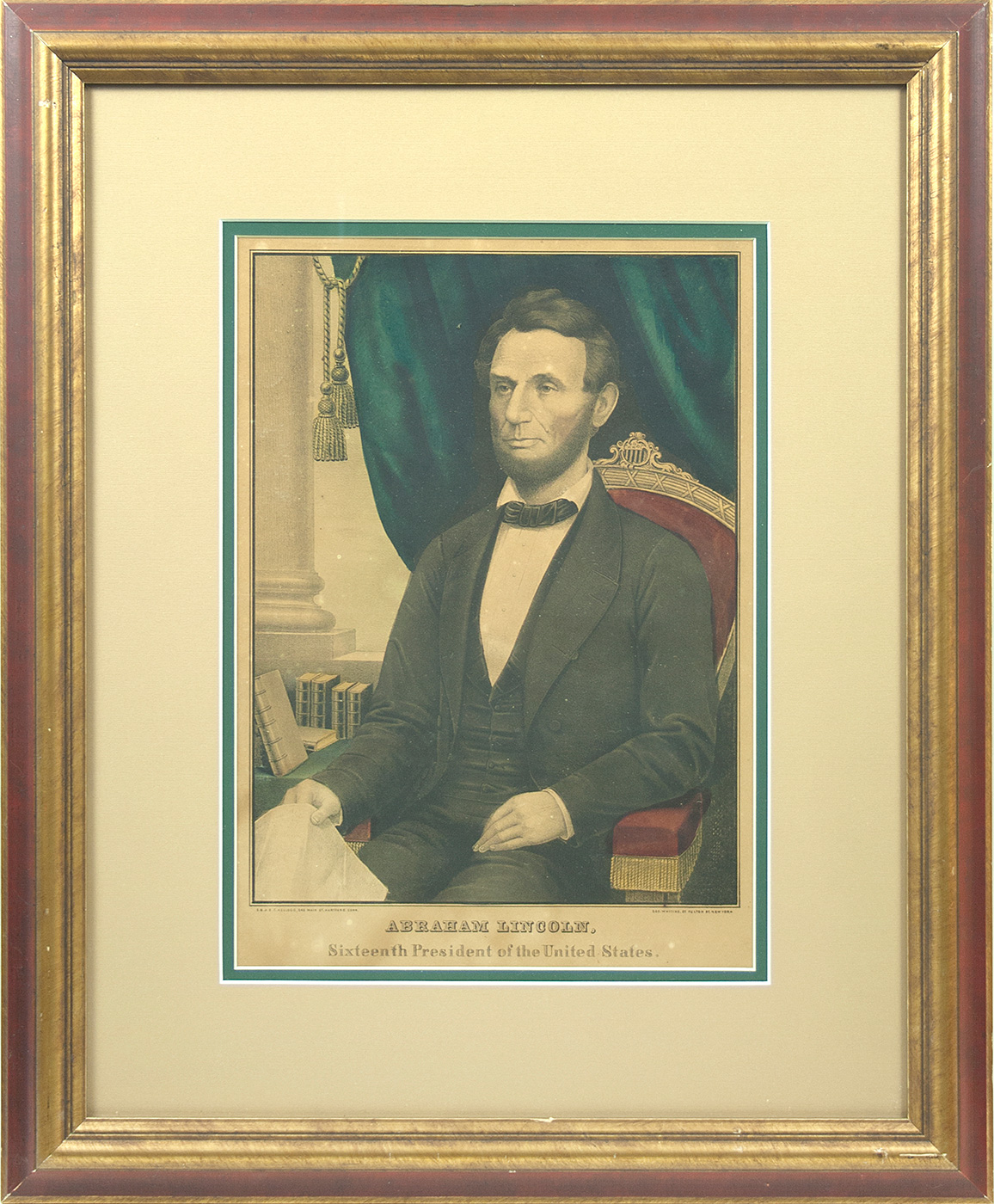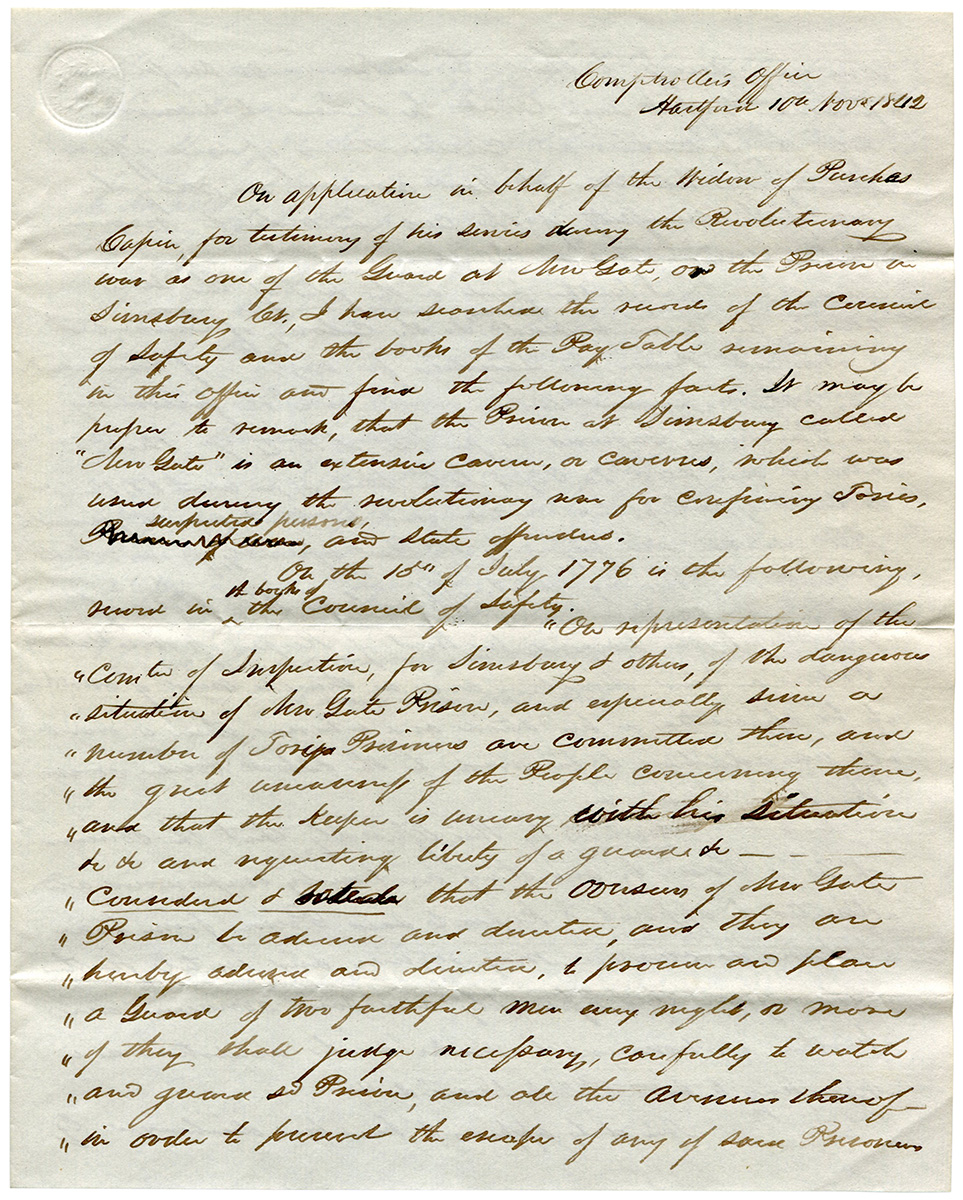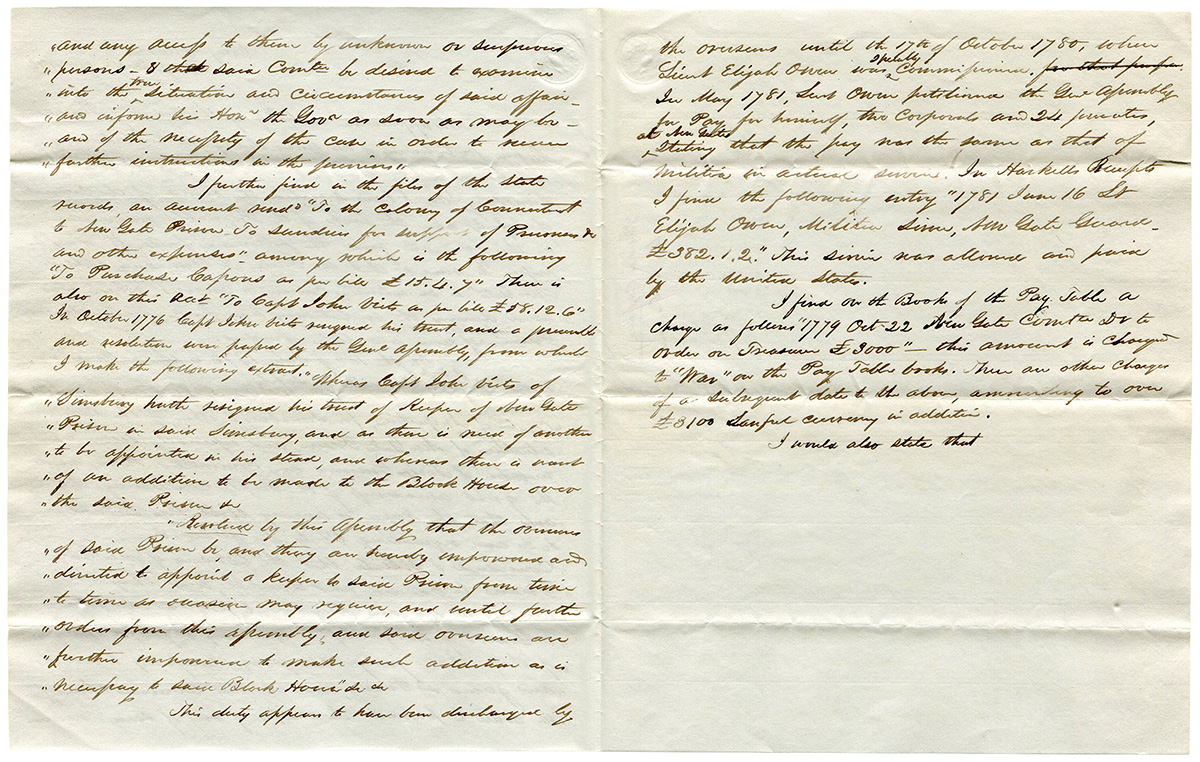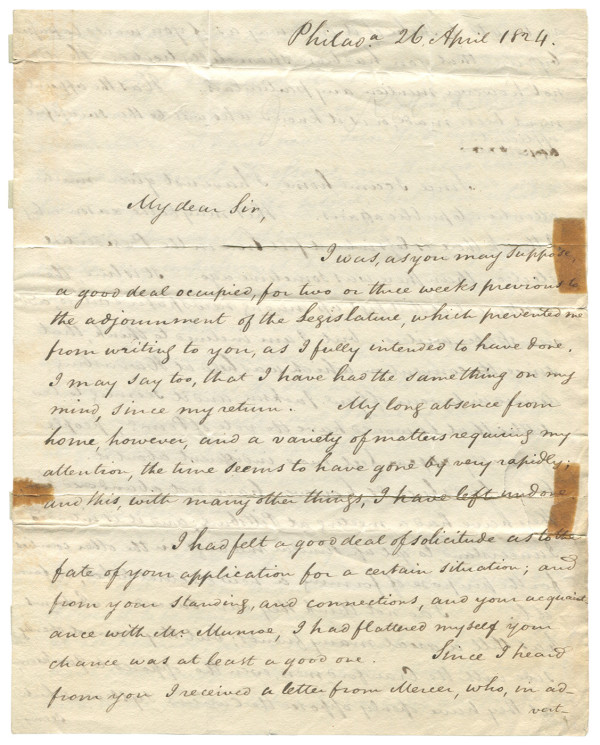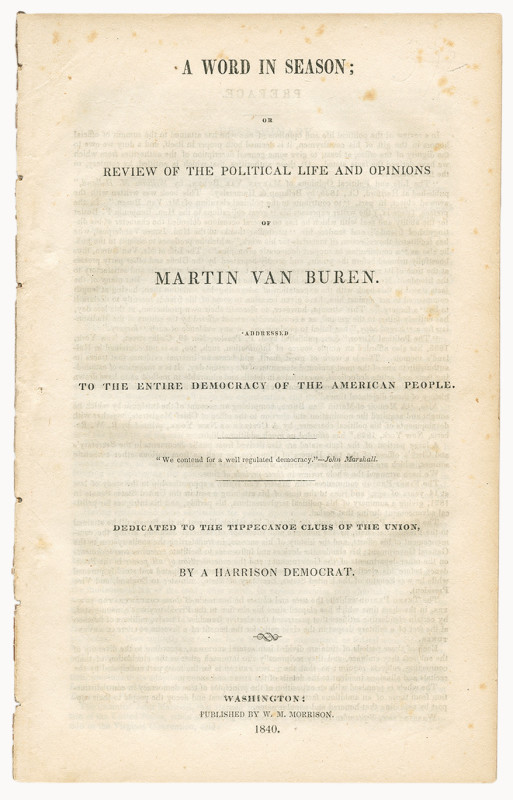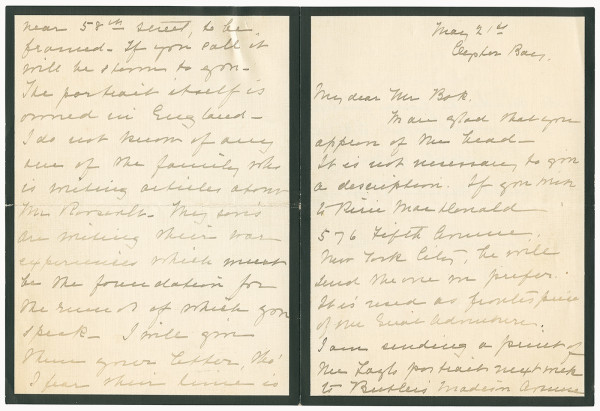
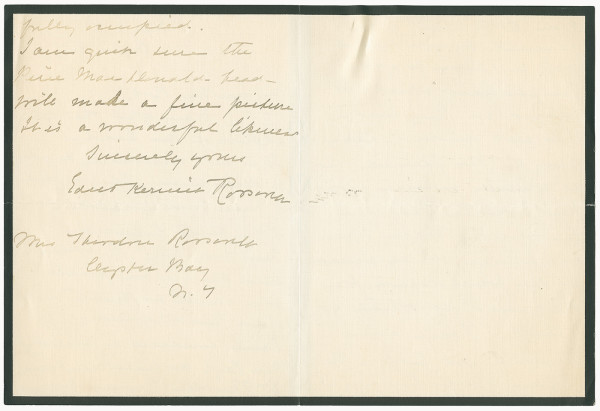
“…the picture we like best is the Lazlo portrait… the Sargent portrait in The White House… we do not care much for it… The photograph which we all like is a head by Pirie Macdonald…”
Edith Kermit Carow ROOSEVELT (1861-1948) A pair of fine content letters written to Edward W. Bok1, editor of the Ladies’ Home Journal concerning two portraits of Theodore Roosevelt. Theodore Roosevelt and Bok were close friends. For a number of years the former President anonymously authored the column, “Men” in the Ladies’ Home Journal at Bok’s request.
The first is an Autograph Letter Signed “Edith K. Roosevelt, Mrs. Theodore Roosevelt”, 2 pp., 175 x 115 mm. (7 x 4 1/2 in.), Oyster Bay, New York, 18 May [1916-1918], on Sagamore Hill letterhead, in which she writes, in full: “We have discussed your letter and while we feel that the picture we like best is the Lazlo portrait2, we feel it may not be entirely suited for your purpose. My husband is seated in his riding boots not breeches a long cloak thrown back from his shoulders, his riding whip in his hand- Perhaps the Sargent portrait in The White House would be better, tho we do not care much for it. The photograph which we all like is a head by Pirie Macdonald,3 but perhaps you wish a full length picture. Of course I have photographs of all kinds, and shall only too glad to help in any way—”

Soon after Theodore Roosevelt’s death in 1919, Bok received another Autograph Letter Signed, “Edith Kermit Roosevelt [and] Mrs Theodore Roosevelt” 3pp., 165 x 120 mm. (6 1/2 x 4 3/4 in.) on black-bordered mourning stationery, Oyster Bay, 21 May [1919]:
“We are glad that you approve of the head— It is not necessary to give a description. If you write to Pirie MacDonald 576 Fifth Avenue New York City, he will send the one we prefer. It is used as [the] frontis piece of The Great Adventure.4 I am sending a print of the Laszlo portrait next week to Butler’s Madison Avenue near 58th street, to be framed- If you call it will be shown to you – The portrait itself is owned[?] in England – I do not know if any one of the family who is writing articles about Mr. Roosevelt- My sons are writing their war experiences which must be the foundation for the rumor of which you speak — I will give them your letter, Tho’ I fear their time is fully occupied. I am quite sure the Pirie MacDonald head will make a fine picture. It is a wonderful likeness.”
A pair of fine content letters which reveal the Roosevelt family’s opinion of some of the significant portraits rendered of the 26th President.
The 18 May letter bears some light uneven toning, usual middle fold, paper clip impression, else very good. The 21 May letter bears extremely minor marginal tear, minor mark from paperclip at top margin of second page, one horizontal crease, else fine. Together, two pieces.
(EXA 4618) $800
_____________
1 (1863-1930) Dutch-born American editor and Pulitzer Prize-winning author. For three decades Bok edited Ladies Home Journal where he coined the term, “Living Room”—updating the Victorian parlor for the twentieth century.
2 Philip Alexius de László, “President Theodore Roosevelt,” oil on canvas, 1908. Portrait part of the collection of the Museum of Natural History, New York.
3 (1867-1942) Noted New York photographer.
4 (New York: Charles Scribner’s Sons, 1919).
